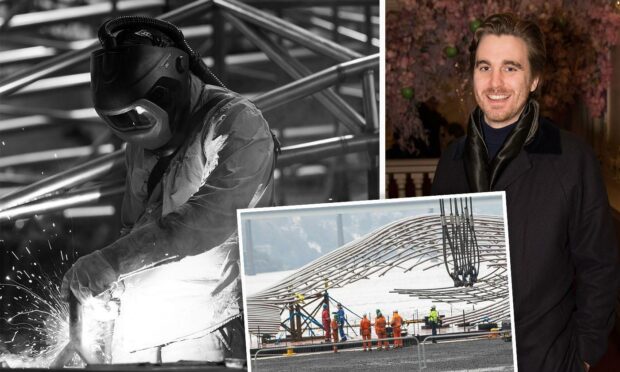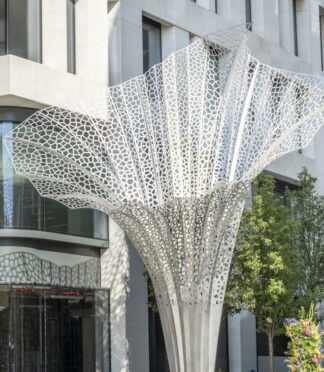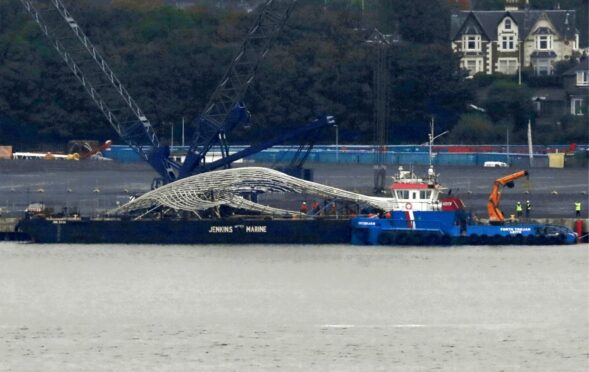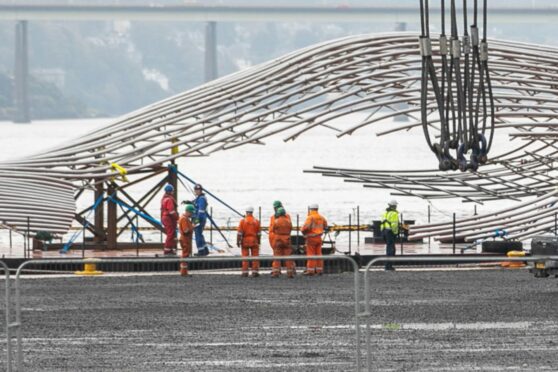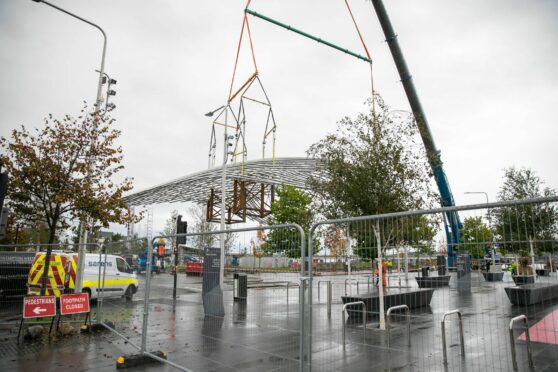The highly-anticipated Tay Whale sculpture made waves in Dundee on Tuesday as it reached its final destination – the city’s Waterfront.
And right there in the fray of hardhats and hi-vis was the visionary behind the sculpture itself, London-based artist Lee Simmons.
“This does feel like the pinnacle of my career to date,” says Lee of the 35m-long humpback whale sculpture.
“And it’s a huge honour and privilege to undertake this commission for the great city and people of Dundee.”
It’s no surprise that, as the UK’s only UNESCO city of design, Dundee is all abuzz about this new feat of art and engineering in our midst.
So we caught up with 33-year-old Lee ahead of the installation to find out more about the man – and the journey – behind the marvel.
Rebecca: You’ve been a respected sculptor in London for some time, and now you’ve created a centrepiece for Dundee’s Waterfront. How did you get to where you are now?
Lee: I was fortunate enough to have two very good art teachers at secondary school who set me on my journey.
I went on to study metalwork and jewellery at Sheffield Hallam University, where I gained a first class honours. I also won a few high profile awards upon graduating for my degree show at New Designers, which showcased nationwide graduates.
After graduating from Sheffield I then went on to study at the world-renowned Royal College of Art and had a successful degree show, where I was fortunate to win a few awards.
After graduating, I undertook some of my first public commissions. And some of my early artworks were very well received and this has built up to the present day.
Do you have an artistic mission or ethos? If so, what is it?
I have always felt art should be democratised and undertaking works of a public nature have always been a little bit of a personal mission.
Who are you influenced by most in your life?
Personally? My family members.
The Tay Whale is your first Scottish project. What drew you to this city and this project?
Yes, this is my first project in Scotland, which I feel privileged to have undertaken.
I’ve wanted to work outside of London for some time and the opportunity and the multi-faceted nature of the brief was the direction of travel I wanted to move in.
Plus the amazing city of Dundee, with its rich history and ambitions, felt like an opportunity not to be passed on.
And it’s been a fairly intense delivery, by the looks of things?
Yes! The last interview was just before the pandemic, and I was awarded the commission in May 2020 – all of which has been a very intense period, as projects to date have typically ranged from two to eight years!
But I’ve been very conscious of the social importance of this project. Being awarded the commission against the backdrop of the pandemic, outside public spaces and public realm have never been so important to the civic life.
So I have worked tirelessly with my team to deliver this at a very fast pace.
Has the pandemic itself presented challenges with the project?
There were huge challenges with certain materials, however personally, working at times via video conference calls on a regular basis has made for a great close working relationship with the council.
The main issues have been material shortages that have been compounded with the end of the transition period of Brexit, but we did overcome that.
On a practical note – you’ve made a lot of community art. How can you ensure it’s not made into an eyesore by vandals – or a climbing frame for daredevil kids?
I mean, you can never fully design this out, I have undertaken several projects in high profile locations in London and you arrive at the conclusion if an individual is determined enough, they will attempt to scale it.
There are countless examples of people, scaling various tall buildings in London, for example.
However, the lowest points of this sculpture are out of reach for typical daily interaction from the public.
The whale was inspired by Dundee’s historic ties with the whaling industry and Antarctic mission, as well as the famous real-life “Tay Whale”. Did you dive into the city’s history for the project?
Yes – I spent many months researching Dundee’s rich history. I also have family and friends from the area of Dundee and the Scottish borders, so that’s been useful for discussing historical context.
Now after all the hard work, the Tay Whale is being installed – it’s all coming together. So how does it feel?
It’s a huge honour. The people of Dundee have been very receptive, which I am extremely grateful for.
Ultimately, the project is for the custodians of the city.
Related:
